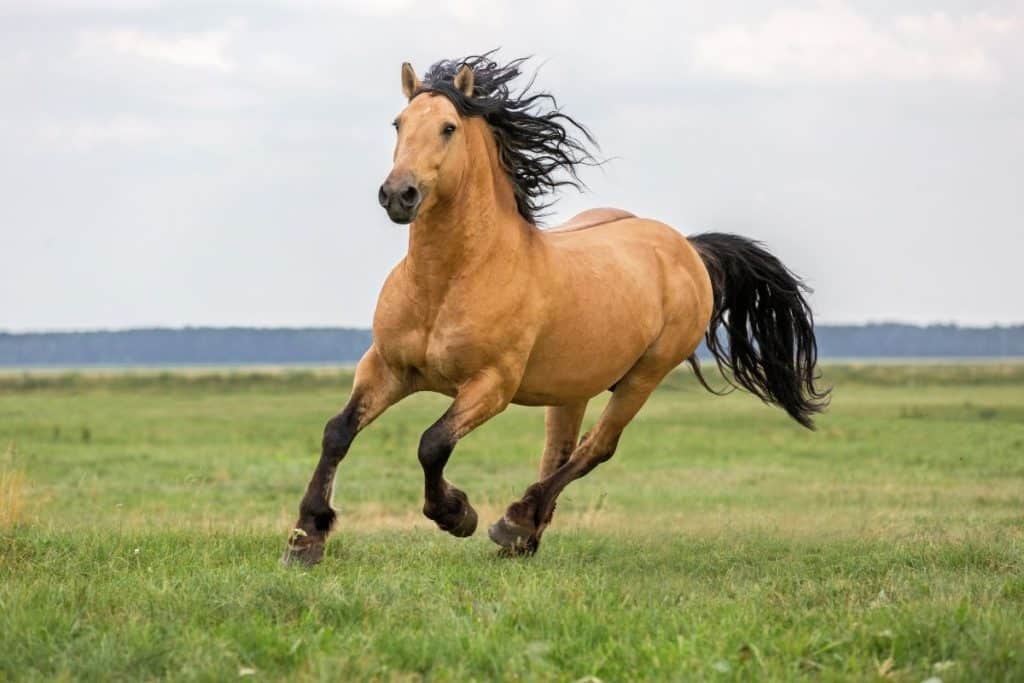Horse riding is a popular activity that provides a thorough workout alongside the chance to bond with horses. It is a complex discipline that takes time to learn.
The time it takes to learn how to ride a horse depends on what the new rider hopes to achieve. Learning the basics of horse riding can take from one month to three months of training sessions. Learning to master the intricacies of horse riding can take many years of constant practice.
If you’re looking to learn to ride a horse, we will provide some more details about the process’s time. We will also look at tips for beginners, as well as at the best breeds to start learning horse riding.
How Long It Takes to Learn Horse Riding
Mastering the discipline of horse riding can be highly time-consuming. But, learning the basics can take only a few months. The number, and frequency, of horse riding lessons, play a big factor in this process.
How Often Should You Take Horse Riding Lessons?
There is much to learn when it comes to horse riding. Plenty of lessons are recommended for beginners, but you should aim for at least one weekly session, ideally two if your funds and schedule allow it.
You should also squeeze in as much practice time as possible in between lessons. The practice time will help reduce the time it takes to learn, and it will create more of a bond with the horse as you continue to learn from each other.
Lessons usually take about three months if you’re looking to learn the basics, but depending on your trainer, it can take as many as 10 sessions, or more, spread across as many weeks.
Is It Easy To Learn Horse Riding?
Like any other discipline, learning to ride a horse takes a great deal of instruction, and it’s vital to do things correctly. It is very important to seek out an experienced trainer and to sign up for lessons. Knowledge and practice will be instrumental in helping you become used to this activity.
In time, you will know instinctively how to anticipate the horse’s movements and how to respond to them. It’s recommended to further your study of horse riding when you’re at home in between lessons.
Books, online tutorials, and forums are all valuable resources to expand your understanding of horse riding.
Some other factors will influence the difficulty level of this process:
Fitness level
Horse riding is a sport and a very thorough workout. You should be prepared to use most of your muscle groups in your time spent doing this activity.
Particularly affected will be your:
- Core
- Legs
- Arms
It’s recommended that you build up strength in those areas before signing up for horse riding lessons.
Understanding horses
If you haven’t spent much time around horses before taking up horse riding lessons, chances are that you’re not going to be very knowledgeable about them.
While you’re taking lessons, make sure to observe your horse’s reactions and adapt to them. When you’re not taking lessons, spend as much time around horses as possible. Spending time getting to know them will help you in the long run.
Patience
Horse riding takes time to learn. The basics can be achieved in a few months, but mastering the activity can take a lifetime of study. Attempting too much before you’re ready won’t work out in your favor. Follow the advice of your trainer and take your time.
Beginner’s Guide to Horse Riding

Horse riding is a daunting prospect for beginners, but it’s certainly a worthwhile challenge. Here are some more insights and tips for your horse riding journey.
Best Age to Start
Horse riding can be learned at any age as long as you have a degree of strength and stamina. Various skills must be learned, and many muscles need to be trained, but beginners can become proficient at the sport from childhood to an older age.
While it’s true that children find it easier to absorb the lessons of horse riding, the most important aspect of learning is being willing to follow instructions. As long as you have the enthusiasm to learn and some physical conditioning, you can pursue this whenever you wish.
Children tend to start horse riding when they’re around 6 or 7, and plenty of adults start in their 30s and 40s. There are quite a few cases of people starting to learn riding skills in their 70s.
Tips for Beginners to Horse Riding
There is much to keep in mind when you embark on this horse riding journey. Here are some examples of what to look out for:
First impressions. Make sure to arrive at your lesson early enough so you can meet your horse before you get started. Also, if you get to the stables with time to spare, another advantage is that your trainer will have some moments to show you how to set up your horse before you head out.
Be aware. Be mindful of how and where you stand in front of him. Horses tend to expect human movement on their left side.
Proper attire. You may have seen official horse riding equipment in some instances, but there is no exact dress code for beginners. The only rules are to:
- Wear comfortable clothes that will prevent chafing in the saddle
- Wear closed-toe shoes with no heel
- Wear a safety helmet
Posture. This is a very important aspect of horse riding because your posture determines which of your muscles are putting in the most work and because your horse will respond to how you hold your body. Keeping your back straight will help you out a lot here.
Best Horse Breeds for Beginners
Horse riding beginners require a lot of patience from their horses, and some breeds are far more tolerant than others.
- Shetland pony. Shetland ponies are the traditional choice for children learning to ride due to their calm and even temperament, as well as their smaller size.
- American quarter horse. These are some of the most well-mannered horses and an excellent choice for beginners. They are both patient and quick to adapt.
- American paint horse. This is an excellent choice for beginners because the paint horse is one of the friendliest breeds you’ll ever encounter.
- Irish sport horse. These horses are as athletic as they are calm. Irish sport horses make wonderful companions for beginners.
- Morgan horse. The Morgan horse is known to be one of the kindest breeds. They also love to work with new riders and adapt quickly.
- Friesian horse. The ever-popular Friesians are highly intelligent horses. They’re also playful and patient.
- Welsh cob. These horses are very friendly and very resilient. They’re also smart and work very well with new riders.
- Icelandic horse. These horses are on the shorter side and perfect for shorter people. They’re also mild-tempered and very hardy.
Conclusion
Horse riding is a demanding physical activity. Learning the basics of horse riding takes around 1 to 3 months, but it can take years of constant practice to master the sport’s intricacies.
Horse riding lessons are extremely important to beginners because instruction is necessary to understand the many complexities at play. Factors like fitness level, research, and patience are also essential traits for a successful rider.
Some level of physical conditioning is necessary when pursuing horse riding, but you can learn at any age, from 6 to 70 and beyond. You should also keep in mind your posture, attire, and bond with your horse when you start your horse riding lessons.
As we discussed, particular horse breeds are more suitable for beginners, so make sure you pick the right one for you.
